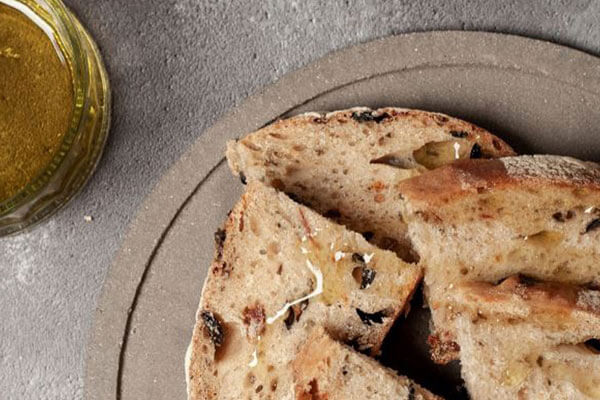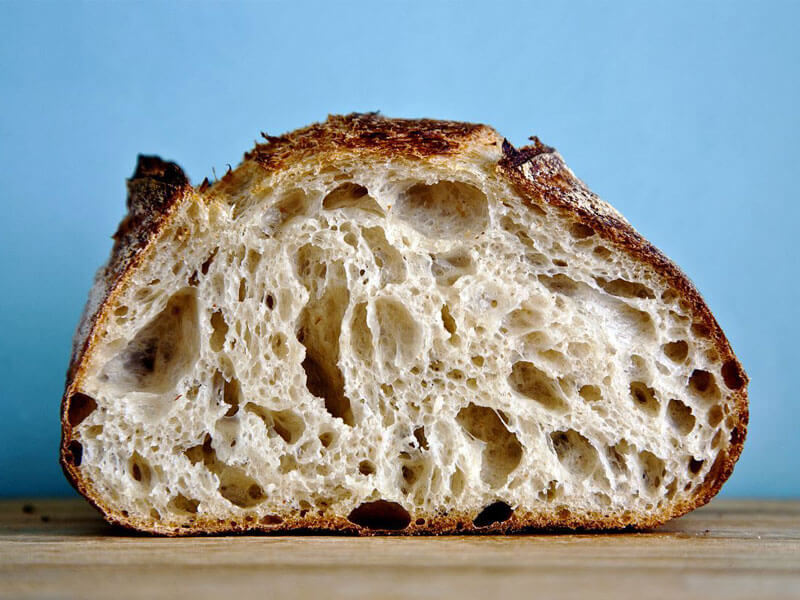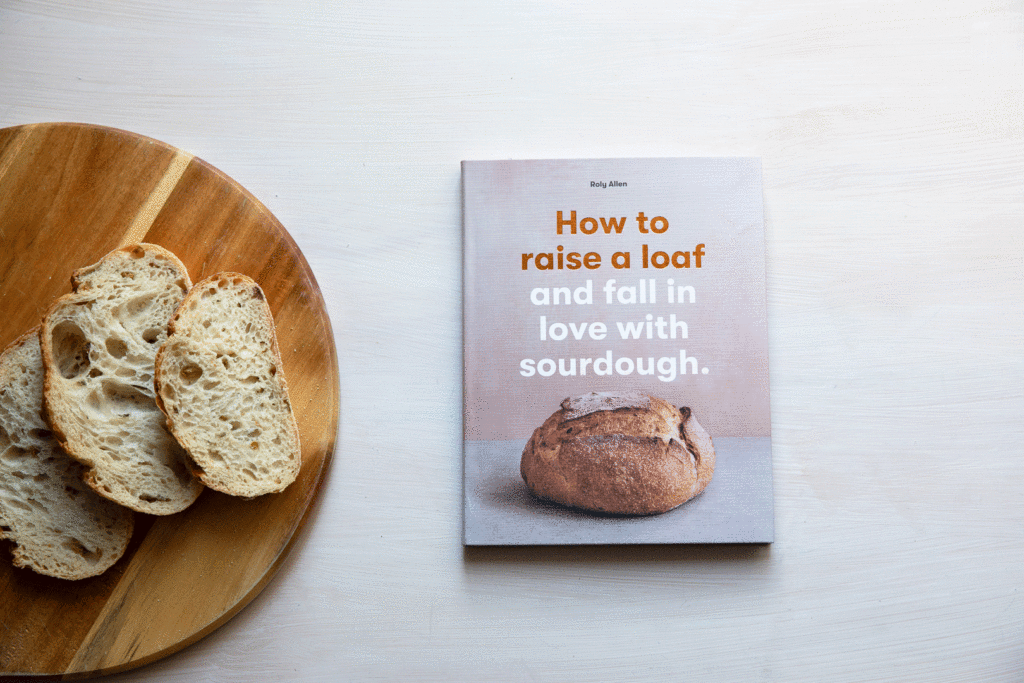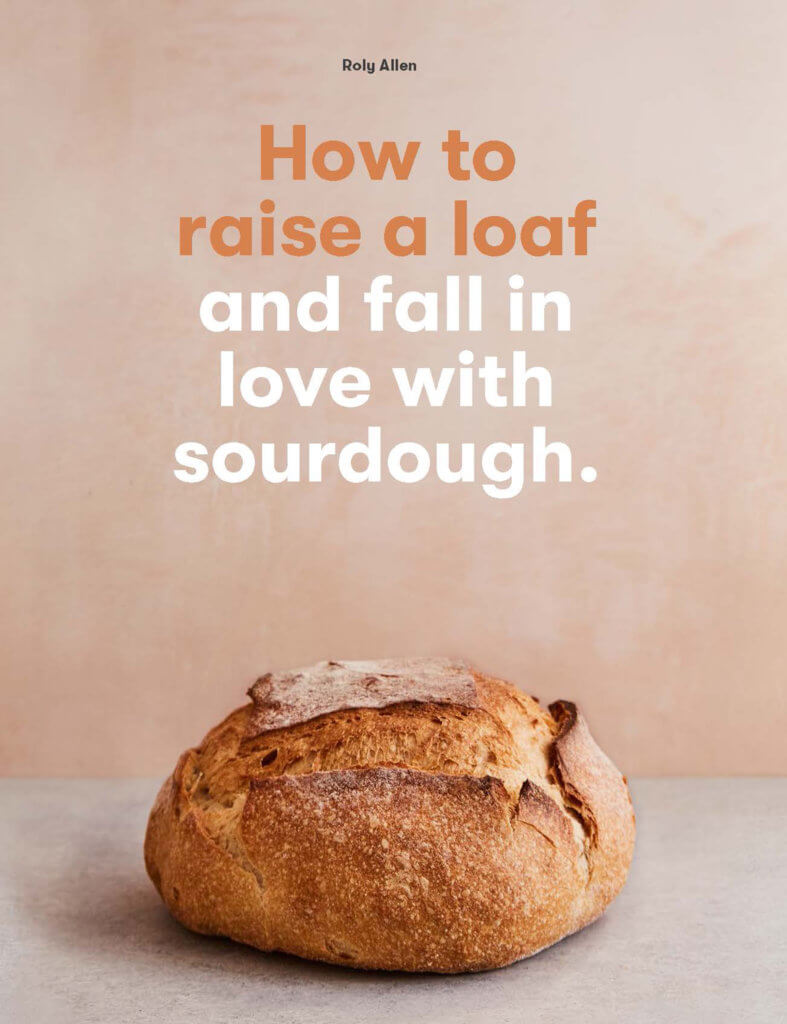
By now, many of us have completed a back-breaking 1000-piece puzzle, tried our hand at something creative and baked our first (or tenth) loaf of bread.
We put a call-out on social media asking what sourdough issues you were facing and collated our top FAQs. Now, we sit down with sourdough expert and author of How to Raise a Loaf, Roly Allen, to have your questions answered.

What is the difference between bread flour and plain flour?
Bread flour has a higher protein content – around 13% is typical. These proteins (specifically, glutiens) are collectively known as gluten and, because they are looooooong molecules, they hold the dough together, making it stretchier, tighter and able to hold bubbles. That’s why you need bread flour for bread. Plain flour has less gluten. Otherwise they are the same.
I feel like my bread is really dense. What do I need to do to my starter for it to be light and fluffy?
It might not just be the starter, but assuming it is, I find that starters get better the more often that you use them and refresh them. If I bake three or four days running, the starter seems to get bubblier and bubblier. If my starter has just been refreshed once, after spending a period of downtime in the fridge, then things can be flat.
What is the maximum amount of time you can keep your starter in the fridge without feeding it?
Tricky one. I’ve heard tell of a starter that was successfully refreshed after several years dormancy in the back of the fridge, but I’d personally not leave it longer than a couple of weeks. If I knew that my starter would be going a long time unfed, I would make a flourier mixture (less water), which will slow everything down. I would definitely give a dormant starter a couple of refresh-discard cycles for it to get its strength back up before baking.
I learned that the word ‘crumb’ describes the inside of the bread from your book, which is interesting. Despite using a white flour but still can’t achieve the open crumb that I want. Any tips?
Try a mix with slightly more water and an overnight (or ‘retarded’) prove in the fridge. You mix and work the dough in the evening, and let it prove slowly at low temperature before baking in the morning. That might do it!

I normally don’t eat white bread. I’ll always choose a wholemeal or multigrain. Do you recommend always starting with a white loaf first because it’s the easiest, or do you think jumping straight into wholemeal is achievable?
It is definitely easier to get a white loaf to rise and have an open crumb. That said, I really like denser brown breads myself and, if that’s what you like, I would just go ahead and start with them. Practice makes perfect, no matter what colour your loaf is.
Cooking time — dutch oven lid on for 45 mins and lid off for the final 15. Do you approve?
If it works for you, then yes!
What does adding a source of steam mean? I just have a regular fan-forced oven and no fancy equipment. What are some ways that I can easily add steam?
It is essential, but easy – just put a cup of hot water into an oven dish in the hot oven before you put the loaf in. The steam stops the crust from setting hard before the middle of the loaf has baked.
I just learned that you can overproof dough. Anything else we might not know about sourdough?
Salt is absolutely essential, and not just for taste. The salt works on a chemical level with the gluten to help the crumb form. If you forget to add salt, or don’t add enough, you get something that doesn’t taste, or look, that good. I’ve learned this the hard way.

What do you think is the biggest mistake people make when they try to make their first loaf?
I can’t speak for everyone, but the mistake I made was leaving the dough to prove for too long. This means that the dough pancakes out and you get a discus-shaped loaf that’s really dense. You need to get that dough into the oven while it’s still nice and springy to the touch.
What are your favourite toppings for freshly baked sourdough?
For breakfast: butter and apricot jam; for lunch, cheese and pickle; with dinner, butter or olive oil. If it’s toasted then it’s Marmite every time (Marmite is similar to Vegemite, but delicious).

There are so many types of bread. Why do you think sourdough is such a craze?
Two reasons. Firstly, it’s a reaction against industrially-produced food. Sourdough bread is traditional, it doesn’t have additives, and you can tell that from how it tastes. Secondly, we are only now starting to understand how important our gut biomes are to our overall health – not just to our digestion. The lacto-bacteria that make sourdough taste slightly sour seem (don’t ask me for the detail!) to have a really positive effect in that department.

How to Raise A Loaf and Fall in Love with Sourdough is available now. Text by Roly Allen and published by Laurence King Publishing.
AU$25
Posted on June 16, 2020